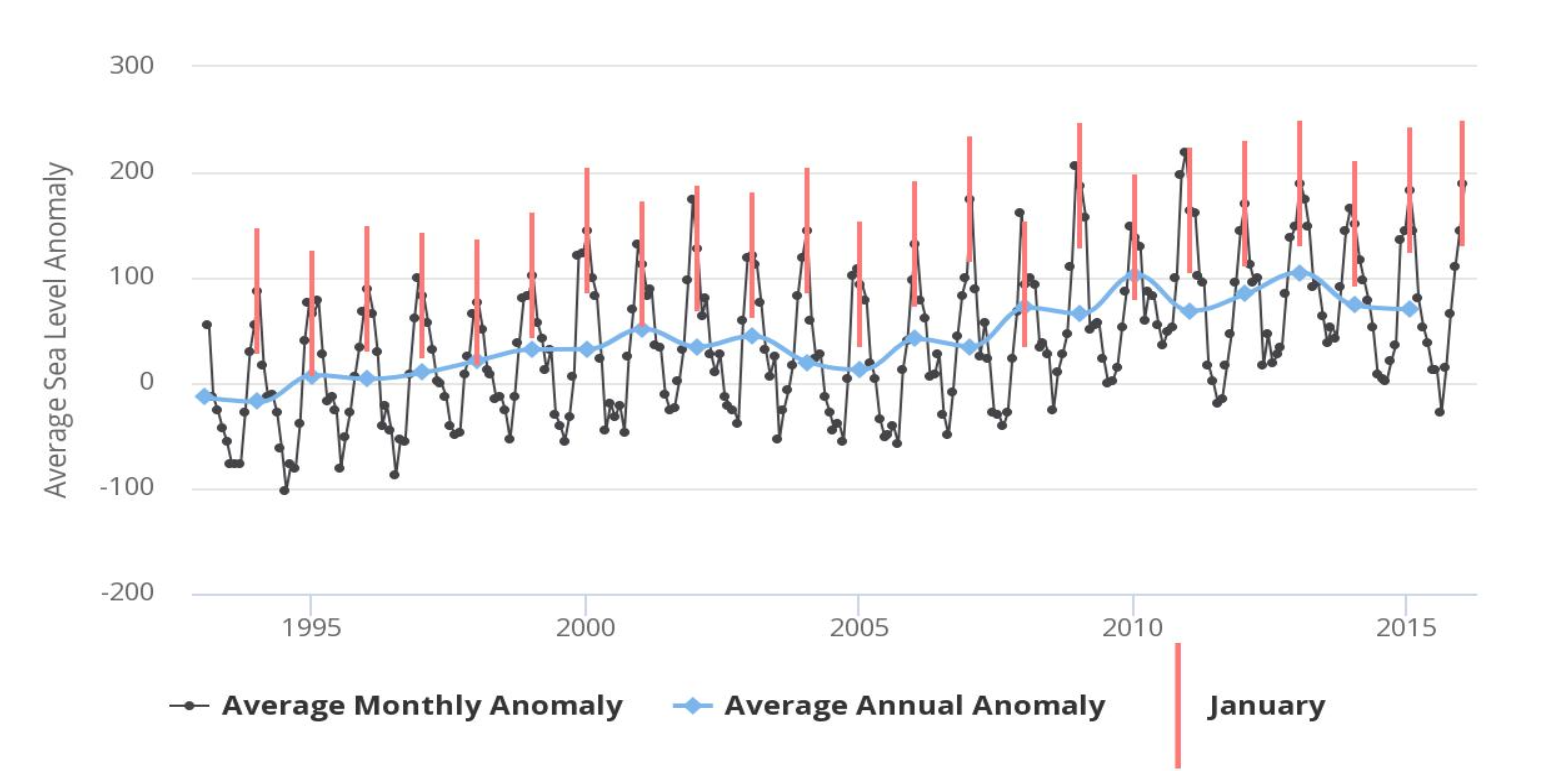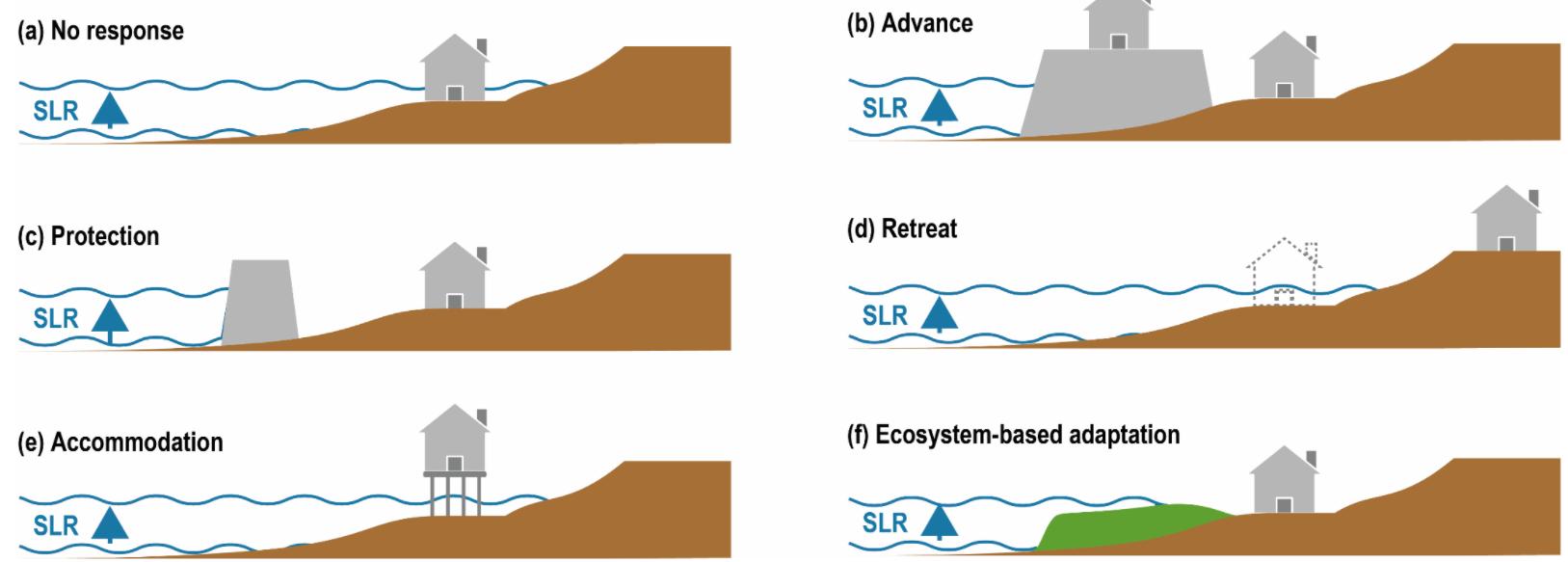Adaptive Measures for Increasing Sea Level Rise in Vietnam
Introduction
The 21st century has witnessed frequent and extreme climate change hazards compared to previous years. One of the major consequences of climate change is the sea-level rise which can be directly associated with the increase in GHG emissions and ocean thermal expansion along with the mass loss of glaciers. Observations suggest that sea-level rise will continue to increase even after GHG emissions are reduced well below 2 degree Celsius compared to pre-industrial levels as mentioned in the Paris Climate Change Agreement. However, researchers state that the rise in sea level will not be uniform around the world, with South and Southeast Asian countries being more vulnerable to sea-level rise. Around 237 million people living in six different countries are at risk due to coastal flooding by 2050.
Vietnam's characteristics make it more vulnerable to climate change impacts among other countries. Located in many transboundary river basins and having several low-lying coastlines, Vietnam is susceptible to sea-level rise and changing precipitation patterns along with storm surges. The International Centre for Environmental Management (ICEM) confirms that sea-level rise is likely to affect its infrastructure, agricultural lands, and its inhabitants. Highlands with inadequate water retention capacities and critical erosion factors worsen the country's ability to cope with the consequences.
Recent observations from the coastal and island stations reveal the water level in Vietnam has increased by 2.45 mm/year on average. However, different regions of Vietnam have experienced an average increase or decrease in the sea level rise. The highest is observed in Phu Quy station (5.6 mm/year) and in the Hon Ngu and Co To stations witnessed a downward trend (respectively 5.77 and 1.45 mm/ year).
Figure 1: Historical sea level rise in Vietnam from 1993 to 2015. Source: World Bank data
Coastal cities with large population densities like Ho Chi Minh and Central coastal provinces from Thanh Hoa to Binh Thuan, and the Mekong Delta area are at high risk from coastal flooding. The Mekong River Delta is estimated to have serious impacts compared to its counterparts even with adaptive measures. In addition, sea-level rise and extreme weather events can cause climate-induced migration displacing more than 14.2 million residents from the Mekong Delta. Among the many that are to be displaced, the most vulnerable are the poor, women, children, and ethnic minorities.
Impacts on different sectors
In Vietnam, projections confirm that by 2050, a rise of 18 to 38 cm of sea level could cause the loss of 2% GDP. Fishery, agriculture, forestry, energy and transport sectors are the most vulnerable to sea-level rise. Some of the negative impacts of sea-level rise are:
Intrusion of salinity into freshwater reduces the growth of the freshwater aquatic species, altering the ecosystem balance. For instance, in the Mekong Delta, the salinity intrusion extends up to 15km and 50km inland in the rainy and summer seasons respectively.
Reduction in coastal farming areas and has limited rice production in Vietnam. It has further narrowed down the grazing areas and the cost of water supply for livestock has risen due to the salinity in freshwater.
Decrease in the area of the mangrove ecosystem due to increased coastal erosion in the southern provinces of Vietnam, especially in the Mekong Delta. The adaptation of some species of mangroves to the increased salinity in water and temperature is difficult, causing a loss of biodiversity.
Energy and infrastructure are likely to be hit by sea-level rise causing disruptions in power plants, fuel lines and other facilities located in coastal areas.
Road and rail infrastructures are possibly prone to erosion by saltwater intrusion. An increase in 100cm of sea-level rise can damage 28% of the roads in the Mekong Delta, 27% of other provincial roads and 4% of the national rail system .
Adaptation to sea level rise
Vietnam's climate change adaptation policies are in place to tackle the vulnerabilities within and outside the country. Along with its other Nationally Determined Contributions (NDCs), adaptive measures could enhance the country's socio-economic conditions and natural resources. The adaptation policies of Vietnam are ensured to decrease the vulnerabilities of climate change hazards and also contribute to decrease the country's GHG emissions. The adaptation measures of Vietnam includes the strategies to tackle sea-level rise from 2021 - 2030. Some of the solutions include:
Advance: structures that are built by pumped sand or other material above sea level to reduce coastal risks of flooding.
Protection: reduces the impacts of seawater flooding the city or coastal areas. Hard protections like dikes, sea walls, breakwaters, barriers and barrages are used to protect against floods, erosion and soil water intrusion. Other protections include sediments and dunes. All these measures are implemented in combination and are called hybrid measures.
Retreat: this adaptation strategy includes three forms within itself: migration, displacement and relocation. Migration involves the permanent or semi-permanent movement of an individual for a minimum of one year. Displacement is a voluntary movement of an individual to the impacts of climate change or any other climate-related hazards while relocation involves government bodies helping individuals to resettle in a different locality usually by providing incentives to households.
Accommodation: the biophysical and governmental adaptations to reduce coastal risks by scaling down the impacts on human lives, livestock, ecosystem and human activities. Switching to elevated or floating houses, shifting to crop varieties that are resistant or tolerant to saltwater, emergency planning, insurance schemes, and setback zones by governmental institutions are some of the methods that fall under accommodation to tackle sea-level rise. Residents of Can Tho City of the Mekong Delta, Vietnam, elevated houses in response to tidal flooding. In the Mekong Delta, the rice fields are flushed with fresh water to wash out the salinity.
Ecosystem-based adaptation: response offers a combination of protection and advance benefits by preserving and reestablishing coastal ecosystems. The system helps in constricting waves and reduces the velocity of storms by acting as barriers. They also reduce soil erosion by trapping coastal sediments.
Figure 2: Different adaptation strategies for communities in coastal areas prone to sea level rise.
Conclusion
Failure to reduce GHG emissions or to adapt to sea-level rise could cause severe disruptions to communities living in coastal areas in Vietnam and across the globe. It could further continue to compromise the UN's SDGs and hinder a country from achieving its NDCs. The different adaptation strategies are effective to a specific type of response, at a given time and rely upon the social, cultural, technical, and political situation. Poorer sections of society, rural inhabitants, and island communities are prone to severe vulnerabilities if immediate adaptation strategies and ambitious targets to reduce GHG emissions are not in place.
GODWIN ADAMS


